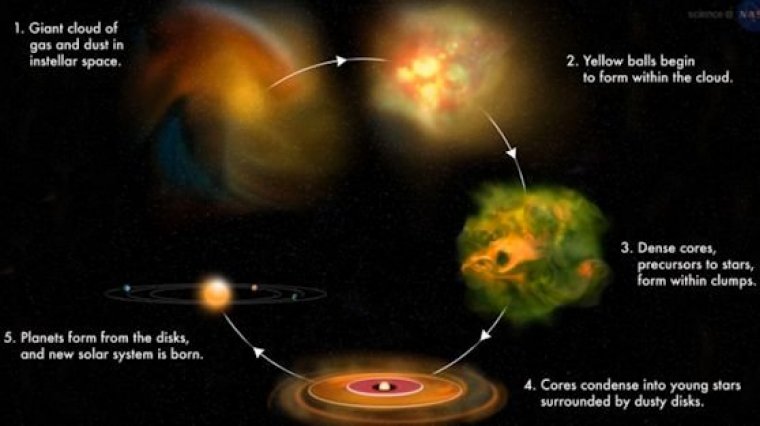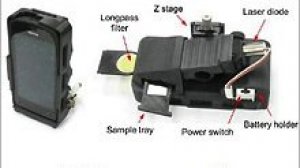| News / Science News |
Citizen Scientists Discover Yellow "Space Balls"
NASA | APRIL 12, 2015
Citizen scientists scanning images from NASA’s Spitzer Space Telescope, an orbiting infra-red observatory, recently stumbled upon a new class of curiosities that had gone largely unrecognized before: yellow balls.

An artist's concept shows how "yellow balls" fit into the process of star formation. ![]()
Before the yellow balls popped up, volunteers had already noticed green bubbles with red centers, populating a landscape of swirling gas and dust. These bubbles are the result of massive newborn stars blowing out cavities in their surroundings.
When the volunteers started reporting that they were finding objects in the shape of yellow balls, the Spitzer researchers took note.
The rounded features captured by the telescope, of course, are not actually yellow, red, or green—they just appear that way in the infrared, color-assigned images that the telescope sends to Earth. The false colors provide a way to humans to talk about infrared wavelengths of light their eyes cannot actually see.
Researchers think the green bubble rims are made largely of organic molecules called polycyclic aromatic hydrocarbons (PAHs). PAHs are abundant in the dense molecular clouds where stars coalesce. Blasts of radiation and winds from newborn stars push these PAHs into a spherical shells that look like green bubbles in Spitzer's images. The red cores of the green bubbles are made of warm dust that has not yet been pushed away from the windy stars.
YOU MAY ALSO LIKE





